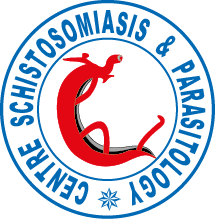Are poor responses to praziquantel for the treatment of Schistosoma mansoni infections in Senegal due to resistance? An overview of the evidence.
Abstract
This paper summarizes and concludes in-depth field investigations on suspected resistance of Schistosoma mansoni to praziquantel in northern Senegal. Praziquantel at 40 mg/kg usually cures 70-90% of S. mansoni infections. In an initial trial in an epidemic S. mansoni focus in northern Senegal, only 18% of the cases became parasitologically negative 12 weeks after treatment, although the reduction in mean egg counts was within normal ranges (86%). Among other hypotheses to explain the observed low cure rate in this focus, the possibility of drug resistance or tolerance had to be considered. Subsequent field trials with a shorter follow-up period (6-8 weeks) yielded cure rates of 31-36%. Increasing the dose to 2 x 30 mg/kg did not significantly improve cure rates, whereas treatment with oxamniquine at 20 mg/kg resulted in a normal cure rate of 79%. The efficacy of praziquantel in this focus could be related to age and pre-treatment intensity but not to other host factors, including immune profiles and water contact patterns. Treatment with praziquantel of individuals from the area residing temporarily in an urban region with no transmission, and re-treatment after 3 weeks of non-cured individuals within the area resulted in normal cure rates (78-88%). The application of an epidemiological model taking into account the relation between egg counts and actual worm numbers indicated that the low cure rates in this Senegalese focus could be explained by assuming a 90% worm reduction after treatment with praziquantel; in average endemic situations, such a drug efficacy would result in normal cure rates. Laboratory studies by others on the presence or absence of praziquantel resistance in Senegalese schistosome strains have so far been inconclusive. We conclude that there is no convincing evidence for praziquantel-resistant S. mansoni in Senegal, and that the low cure rates can be attributed to high initial worm loads and intense transmission in this area.
